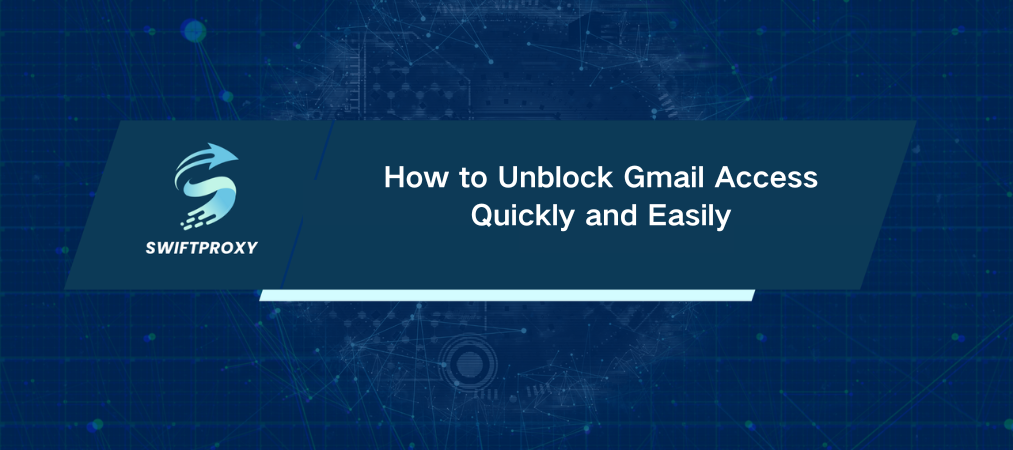How to Unblock Gmail Access Quickly and Easily

Being locked out of your Gmail account can be a major inconvenience, especially when it serves as the hub for both personal and professional communication. If you've encountered a blocked Gmail screen, you're already familiar with the frustration it brings. However, there's no need to panic—there's a solution. This guide will walk you through the process of quickly unblocking Gmail using a proxy. By following a straightforward method, you'll be able to get back to sending emails without delay.
How to Unblock Gmail
If Gmail has put up a wall, it's time to break through. Here's how you can unblock access in just four steps:
1. Pick the Right Proxy
First, choose a proxy that will provide the access you need. A proxy serves as a gatekeeper, helping you bypass Gmail's restrictions. There are many proxy providers available, but Swiftproxy is recommended for its reliability and ease of use.
2. Set Up Proxy Connections
With your proxy selected, it's time to configure it. The setup process depends on the device or browser you're using. Don't worry, it's straightforward once you know where to look.
For Chrome Users: Sign in to your proxy account, choose the proxy you need, click Connect, and you're all set.
For Firefox Users: Start by installing the FoxyProxy extension. Once added, head to your browser's options, enter your proxy details, and save. Now, connect to the proxy and you're ready to roll.
For Mac Users: Log into your proxy dashboard and grab the necessary proxy details (IP address, port number, etc.). From there, head into your Mac's proxy settings, enter the info, and choose your proxy type. Don't forget to hit Apply when done.
For iOS Users: Connect to Wi-Fi, then go to your iPhone's Wi-Fi settings. Tap Configure Proxy, input your proxy info, and hit Save.
3. Link to Your Proxy
Once the setup is done, it's time to connect. This is the easy part:
In Chrome, simply click Connect next to your chosen proxy in the extension.
For Firefox, go back to the main page, select your proxy, and hit Connect.
On your Mac, just click Apply after setting up the proxy.
On your iPhone, hit Save, and you're all set.
4. Access Gmail
Now for the moment of truth. With your proxy connected, head to Gmail’s website, and you should have full access again. You can now send emails without any issues.
Why Was I Blocked from Gmail
Before you rush into setting up your proxy, let's first understand why you might’ve been blocked in the first place. Here are a few common reasons:
Your IP Address is Blocked: If Gmail detects suspicious activity from your IP address, it may restrict access. This is where a proxy helps, by masking your IP and providing a fresh connection.
Your Account is Suspended: Repeated violations like sending spam or engaging in suspicious activities might lead to a temporary or permanent ban.
Technical Issues: An outdated browser or network problems can trigger a block. Ensure your browser is up-to-date and your network is stable.
Incorrect Email Headers: Sending improperly formatted emails can set off red flags at Gmail.
What Exactly is a Proxy
A proxy server acts as a bridge between your device and the internet. When you send a request to access Gmail, the proxy reroutes it through a different IP address. This ensures that if Gmail blocks your original IP, the proxy's IP goes unnoticed, allowing you to slip past restrictions.
There are several types of proxies—forward, transparent, and anonymous—each serving a different purpose. Depending on your needs, you can choose the right one to keep things running smoothly.
Why Use a Proxy
A proxy isn't just about unblocking Gmail. It can also help secure your online activity by masking your identity. Plus, proxies are useful for bypassing content filters, improving security, and even managing multiple accounts more effectively.
Wrapping Up
Getting blocked from Gmail can be frustrating, but with a reliable proxy, you can regain access and continue with your work. By following the necessary steps, you can get back to business quickly.

















































